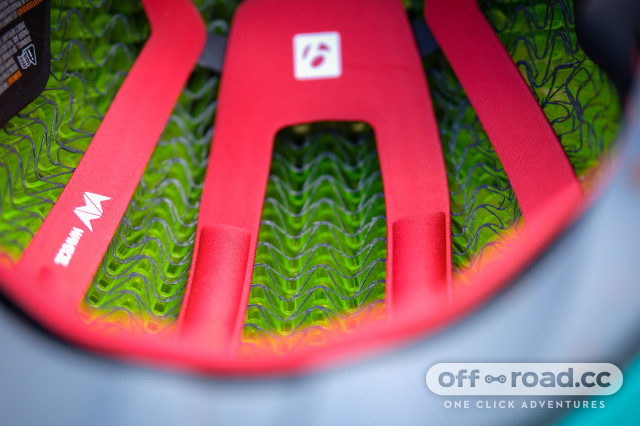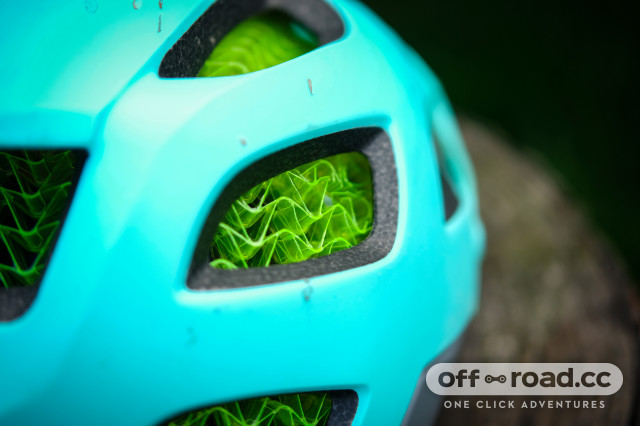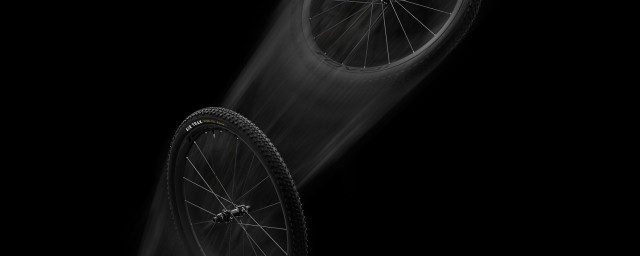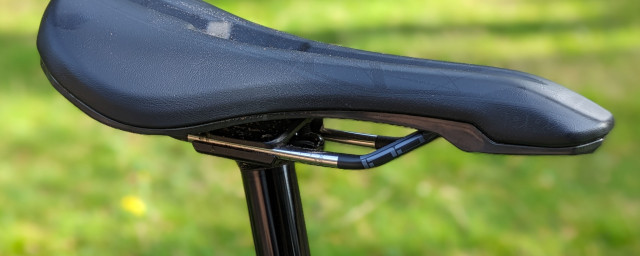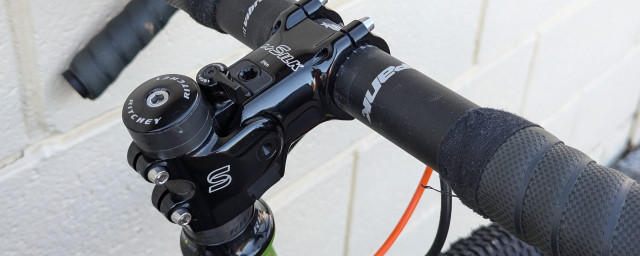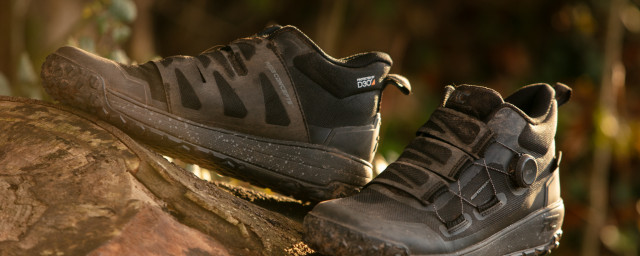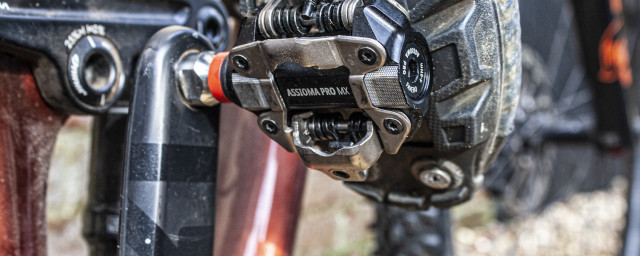What is WaveCel?

Mountain bikers have always demanded better crash impact protection than road riders, and they are more accepting of sacrificing weight and aerodynamics for that outcome. Modern helmets feature a plethora of safety-increasing features both outside and inside of the helmet - and WaveCel is one of them. Let's have a closer look at this technology that is exclusive to Bontrager helmets.
- Best mountain bike helmets 2023 - top-rated head protection for the traill
- Best full face MTB helmets 2023 - top-tier head protection for testing your limits
- Can you use a road bike helmet for mountain bike and gravel riding?
As an industrial design, cycling helmets are quite mature. The basic principle is to use lightweight expanded polystyrene foam (EPS) for the helmet’s inner liner. Applying adequate force with your finger makes EPS soft enough to pressure ding. So why use it as a helmet material? More robust materials would be too heavy, creating neck strain for a rider and a crucial design principle with helmet design is for a material to be sacrificial during impact. That helps to disperse and dissipate energy instead of transferring all the crash impact energy to a rider’s head and, by implication of physics – the brain.
Beyond the aero shapes, wild colourways and clever eyewear docking stations, the best mountain bike helmets don’t look very different from a decade ago - but they are. And what really distinguishes the current generation of off-road riding helmets is what’s inside, below that EPS layer.
Although designers are constantly off-road riding helmets with better ventilation, comfort and fit-adjust systems, the foremost design brief remains protection. Exhaustive research has proven that crash impact injury mitigation is not only about structural barriers. Any helmet protects from a head wound that will bleed or puncture, but the soft tissue damage most telling of a severe concussion often has little to no evidence of external bleeding or bruising.
Biomedical engineers and helmet designers have focussed their R&D efforts and structural solutions on a new generation of structures that absorb and dissipate crash impact, much better than EPS could on its own.
What are slip-plane liners?
Mips is the brand that validated, integrated and triggered the current trend towards internal helmet safety awareness, beyond fixed foam structure.
A Swedish company founded by surgeons, Mips uses slip-plane liner technology. An additional liner inside your helmet allows slight movement (10-15mm) under rotation during impact loading. The logic is this: when you crash at an angle and impact terrain, the Mips liner reduces the severity at which the helmet’s structure and fastening straps rotate your head, as it scrapes terrain.
Having a slip-plane liner, which allows for rotational movement, reduces the likelihood of severe concussion. Mips is the most influential and broadly used inner-structure crash safety technology in mountain bike helmet design but it is not the only one.
Koroyd is an American safety technology brand which uses the world’s thinnest tubes, to enhance helmet safety. Instead of a slip-plane liner inside the helmet, Koroyd’s solution is impact tubes, thermally bonded to form a structure which sits within the helmet’s shell. The Koroyd tubes deform and absorb impact during a crash, transferring less potentially concussive energy to your head and brain.
What is WaveCel?
Similarly to Mips, WaveCel has been designed by a group of surgeons, biomechanical engineers and scientists, creating a unique collapsible cellular structure which promises to enhance helmet safety significantly. Whereas Mips technology is adopted by a variety of helmet brands, WaveCel is only available on Bontrager helmets.
Based in Oregon, WaveCel’s researchers and engineers have been studying and problem-solving around the issue of mountain bike helmets and concussions for two decades.
The principle behind WaveCel is to have a dynamic material layering within the helmet, which can absorb crash impact energy. And even more importantly, dissipate it. The more crash impact energy dissipated by your helmet’s WaveCel structure, the less of it can transfer into your brain’s soft tissue, reducing the risk of a severe concussion.
How does it work?
The WaveCel structure is shaped and glued, following a specific pattern, to give it advanced crash safety properties. When you hold a WaveCel helmet, it becomes apparent where the name comes from: you can see the correlation between the safety structure’s shape and those of waves on a graph.
Its actual structure is made-up of V-shaped layers. Engineers have calculated the exact material matrix and construction to make any helmet equipped with WaceCel much safer in a crash. The ‘waves’ of cellular copolymers constituting the WaceCel structure work in three dynamic movements to absorb crash energy. WaveCel can flex, crumple (like the front impact zone on a car) or glide. In theory, it dissipates energy from an array of impact angles.
Any additional safety structure added to a helmet will increase weight. But at only 53g, the mass penalty for having WaveCel in your helmet’s structure is insignificant.
Is WaveCel effective?
WavCel claims that its technology will reduce concussion risk by 98% and injuries by 73%, compared to a conventional mountain bike helmet. Those are bold claims but are supported by evidence from the authoritative Virginia Tech helmet testing laboratory results, if not at those exact percentages.
Trek is the foremost user of WaveCel technology. It is unique to Trek helmets, which are marketed under the Bontrager sub-brand. Trek prefers WaveCel to the most broadly adopted slip-plane liner, Mips. Which is better? That is a contentious issue.
The Virginia Tech helmet safety study from 2019 found that Bontrager WavCel helmets offered slightly better crash safety performance than the same brand’s Mips-equipped helmets.
Are helmet safety tests valid?
Some helmet designers don’t believe that rotational impact protection is being accurately measured. The implication is that many advanced structures and slip-plane liners that promise enhanced concussion protection, could be scientifically invalid. Italian helmet brand, Kask, is one of those who doubt the data produced in current tests.
Designing a more robust testing standard and data analysis for rotational impact energy dissipation assessment, Kask has advocated for the use of WG11. The CEN testing authority has a specific subcommittee that evaluates head shapes' influence on helmet safety and testing protocol, and it’s called WG11.
Kask argues that without an agreed standard, the claims made by most brand tests for slip-plane liners and concussion-mitigating flex structures aren’t rigorous science.
